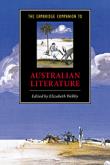'The Aboriginal and Torres Strait Islander peoples of Australia have been telling stories since time immemorial. Although Indigenous oral cultures were once believed to be dying out, it is clear today, in Australia and elsewhere, that many aspects of these ancient cultures have survived in Indigenous communities, and are now thriving as a living, evolving part of contemporary life. Oral songs and narratives are traditionally an embodied and emplaced form of knowledge. Information is stored in people's minds in various narrative forms which, at the appropriate time, are transmitted from the mouths of the older generation to the ears of the young. Many narratives are connected to specific sites, and are transmitted in the course of people's movements through their country. Certain songs and stories are only transmitted in specific ceremonial contexts, while others circulate in the informal settings of everyday life. For oral traditions to survive, then, "the learning generation" must be in direct physical proximity to "the teaching generation". People must also have access to significant sites in their country, and be free to perform their ceremonies, speak their languages, and carry out their everyday cultural activities.' (Introduction)



